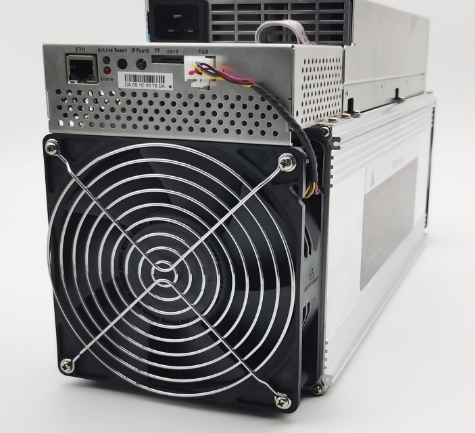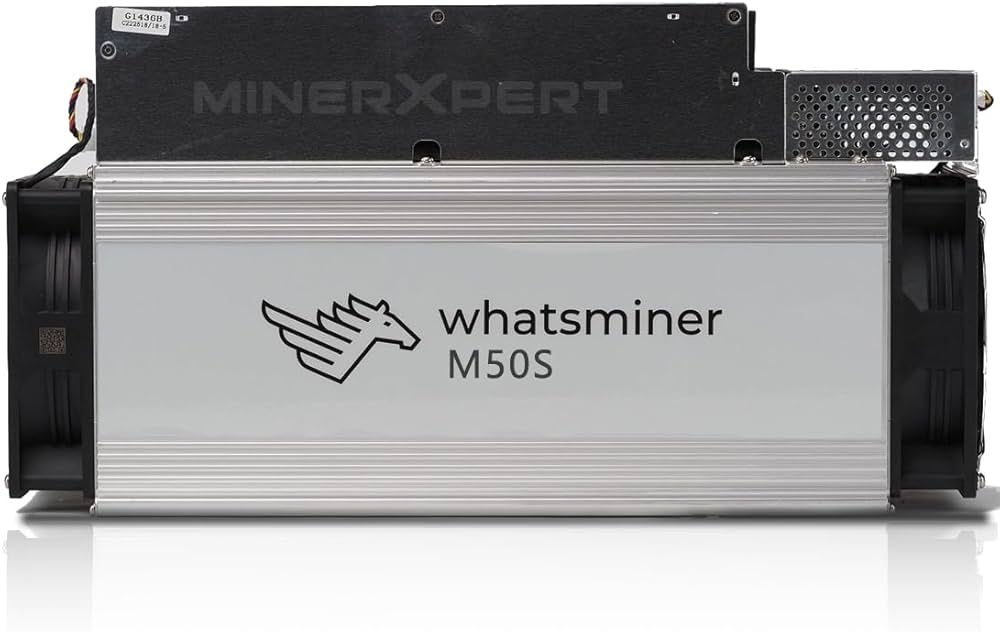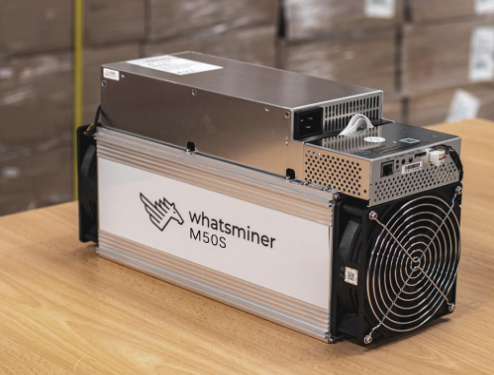WhatsMiner M50S environmental requirements for optimal operation
WhatsMiner M50S Environmental Requirements for Optimal Operation
The WhatsMiner M50S has emerged as a game-changer in the cryptocurrency mining industry, offering unparalleled performance and efficiency for SHA-256 algorithm-based mining. However, to fully leverage its capabilities, understanding and meeting its environmental requirements is crucial. This article delves into the operational conditions necessary for optimal performance, ensuring that mining operators can maximize their return on investment while maintaining the longevity of their hardware.
Product Introduction: The WhatsMiner M50S
The WhatsMiner M50S is a state-of-the-art ASIC miner designed by MicroBT, featuring cutting-edge 5nm chip technology. With a staggering hashrate of 126TH/s (±5%), it is optimized for mining Bitcoin (BTC), Bitcoin Cash (BCH), and emerging SPACE-based cryptocurrencies. Its power consumption of 3276W and voltage range of 200-277V make it a versatile choice for various mining setups.

What sets the M50S apart is its robust design and advanced thermal management system, which allows it to operate efficiently across a wide range of environmental conditions. However, like all high-performance mining equipment, it has specific environmental requirements that must be met to ensure optimal functionality and durability.
Environmental Requirements for Optimal Operation
1. Temperature Control
The WhatsMiner M50S is designed to operate within a temperature range of 5°C to 45°C. While this range is relatively broad, maintaining a stable temperature is critical for several reasons:
- Performance Consistency: High temperatures can throttle the miner’s performance, reducing its hashrate and efficiency. Conversely, extremely low temperatures can cause operational delays or hardware malfunctions.
- Hardware Longevity: Excessive heat accelerates wear and tear on internal components, particularly the 5nm chips and cooling fans. Prolonged exposure to high temperatures can significantly reduce the miner’s lifespan.
- Energy Efficiency: Operating within the recommended temperature range ensures that the miner maintains its optimal power-to-hash ratio, minimizing energy waste.
Practical Tip: For industrial mining operations, consider using temperature-controlled environments such as dedicated mining containers or warehouses with HVAC systems. For smaller setups, ensure adequate ventilation and airflow around the miner.
2. Humidity Levels
The M50S can operate in humidity levels ranging from 5% to 95%, but excessive moisture can pose significant risks:
- Corrosion: High humidity can lead to corrosion of electrical components, potentially causing short circuits or permanent damage.
- Dust Accumulation: Humid environments often attract dust, which can clog the miner’s cooling system and reduce its efficiency.
Practical Tip: Use dehumidifiers in areas with high humidity levels to maintain a stable environment. Regularly clean the miner’s exterior and cooling fans to prevent dust buildup.

3. Airflow and Ventilation
Proper airflow is essential for dissipating the heat generated by the M50S during operation:
- Cooling Efficiency: The miner’s internal fans rely on consistent airflow to maintain optimal temperatures. Blocked or restricted airflow can lead to overheating.
- Air Quality: Dusty or polluted air can impair the cooling system and damage internal components.
Practical Tip: Position the miner in an area with ample space for air circulation. Avoid placing it in enclosed spaces without proper ventilation. Consider using external fans or ducting systems to enhance airflow in densely packed mining setups.
4. Power Supply Stability
The M50S operates within a voltage range of 200-277V, making it compatible with most power supply configurations. However, unstable power can cause operational issues:
- Hardware Damage: Voltage spikes or fluctuations can damage sensitive components, leading to costly repairs or replacements.
- Downtime: Power instability can cause the miner to shut down unexpectedly, resulting in lost mining time and revenue.
Practical Tip: Use a stable power source with surge protection. For areas with unreliable electricity, consider investing in uninterruptible power supplies (UPS) or generators to ensure continuous operation.
5. Noise Considerations
The M50S, like most high-performance miners, generates significant noise during operation. While this doesn’t directly impact its performance, it can affect the operator’s experience:
- Workplace Comfort: Prolonged exposure to loud noise can be uncomfortable for operators working nearby.
- Regulatory Compliance: Some regions have noise regulations that may limit where mining operations can be conducted.
Practical Tip: For noise reduction, consider using soundproof enclosures or placing the miner in a remote location. Alternatively, invest in low-noise cooling solutions to minimize operational noise.
Product Advantages in Challenging Environments
The WhatsMiner M50S stands out for its ability to perform reliably under diverse environmental conditions, thanks to its advanced design features:
- Robust Cooling System: The miner’s dual-fan configuration and efficient heat dissipation mechanism ensure stable operation even in high-temperature environments.
- Modular Design: Easy-to-access components simplify maintenance and repairs, reducing downtime in harsh conditions.
- Durable Construction: Built to withstand humidity, dust, and temperature variations, the M50S is ideal for both indoor and outdoor mining setups.
- Energy Efficiency: Its optimized power-to-hash ratio minimizes energy consumption, making it cost-effective in regions with high electricity costs.
Real-World Applications and Operational Insights
Industrial Mining Farms
For large-scale operations, the M50S’s compact design and environmental tolerance make it a preferred choice. Industrial farms often use temperature-controlled containers or data centers to maintain optimal conditions, ensuring maximum uptime and profitability.

Small-Scale and Home Mining
Individual miners can achieve excellent results by setting up the M50S in well-ventilated spaces such as garages or basements. Proper insulation and cooling solutions are essential to prevent overheating and ensure smooth operation.
Remote Mining Operations
In remote locations with extreme weather conditions, the M50S’s durability and efficiency shine. Miners in such areas often use solar power systems and portable cooling units to create sustainable mining environments.
Conclusion
The WhatsMiner M50S is a powerhouse in the cryptocurrency mining industry, offering unmatched performance and reliability. However, its full potential can only be realized by meeting its environmental requirements. By maintaining optimal temperature, humidity, airflow, and power stability, mining operators can ensure long-term profitability and hardware longevity.

Whether you’re running a large-scale mining farm or a small home setup, understanding and addressing these environmental factors will help you get the most out of your WhatsMiner M50S. With its cutting-edge technology and robust design, the M50S is not just a miner—it’s a strategic investment in the future of cryptocurrency mining.